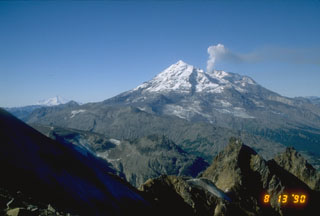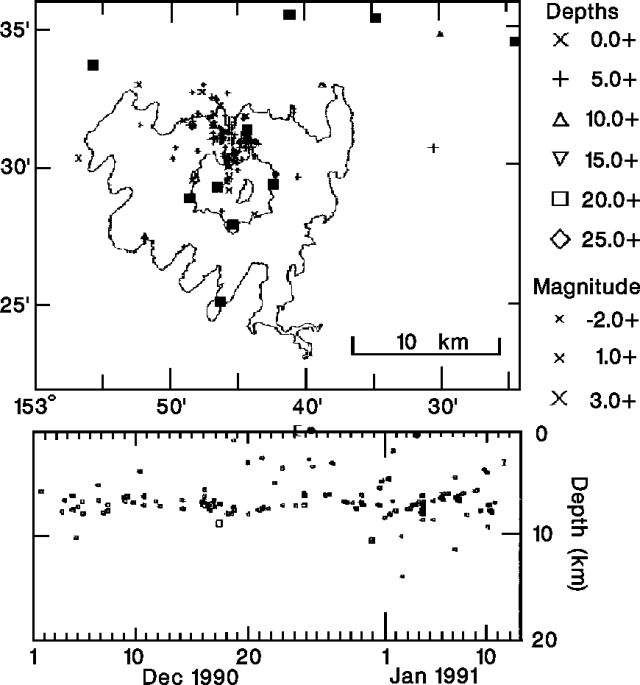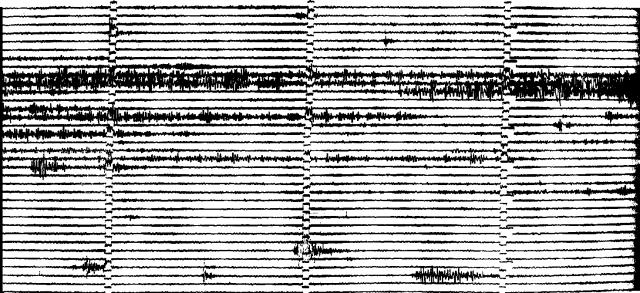Report on Redoubt (United States) — December 1990
Bulletin of the Global Volcanism Network, vol. 15, no. 12 (December 1990)
Managing Editor: Lindsay McClelland.
Redoubt (United States) Continued seismicity but fewer gas emission events
Please cite this report as:
Global Volcanism Program, 1990. Report on Redoubt (United States) (McClelland, L., ed.). Bulletin of the Global Volcanism Network, 15:12. Smithsonian Institution. https://doi.org/10.5479/si.GVP.BGVN199012-313030
Redoubt
United States
60.485°N, 152.742°W; summit elev. 3108 m
All times are local (unless otherwise noted)
Poor weather and limited daylight have prevented geologists from observing the summit area since 14 December, when vigorous steaming was occurring from the lava dome and a minor amount of ash mantled its surface. The following is from the Alaska Volcano Observatory.
"Seismicity at Redoubt continues at roughly the same rate that has characterized the volcano since summer. Shallow, long-period events continue to occur beneath the summit crater, as do volcano-tectonic earthquakes 5-9 km beneath the summit (figure 16). The gas events that generate long (5-45 minutes) low-frequency signals (figure 17) have declined slightly and were occurring at roughly one event every several days in early January. A particularly vigorous event began at roughly 1700 on 4 January."
A series of strong explosions from Redoubt began on 14 December 1989 after several days of increased seismicity. Large tephra clouds were ejected, disrupting air traffic, and mudflows fed by water from the volcano's glaciers forced the closing of a major oil storage facility. Lava extrusion into the summit crater was first observed on 22 December, building a series of domes that were repeatedly disrupted by explosions. The explosive activity gradually became less vigorous, and dome growth stopped in the late spring.
Geological Summary. Redoubt is a glacier-covered stratovolcano with a breached summit crater in Lake Clark National Park about 170 km SW of Anchorage. Next to Mount Spurr, Redoubt has been the most active Holocene volcano in the upper Cook Inlet. The volcano was constructed beginning about 890,000 years ago over Mesozoic granitic rocks of the Alaska-Aleutian Range batholith. Collapse of the summit 13,000-10,500 years ago produced a major debris avalanche that reached Cook Inlet. Holocene activity has included the emplacement of a large debris avalanche and clay-rich lahars that dammed Lake Crescent on the south side and reached Cook Inlet about 3,500 years ago. Eruptions during the past few centuries have affected only the Drift River drainage on the north. Historical eruptions have originated from a vent at the north end of the 1.8-km-wide breached summit crater. The 1989-90 eruption had severe economic impact on the Cook Inlet region and affected air traffic far beyond the volcano.
Information Contacts: AVO Staff.



